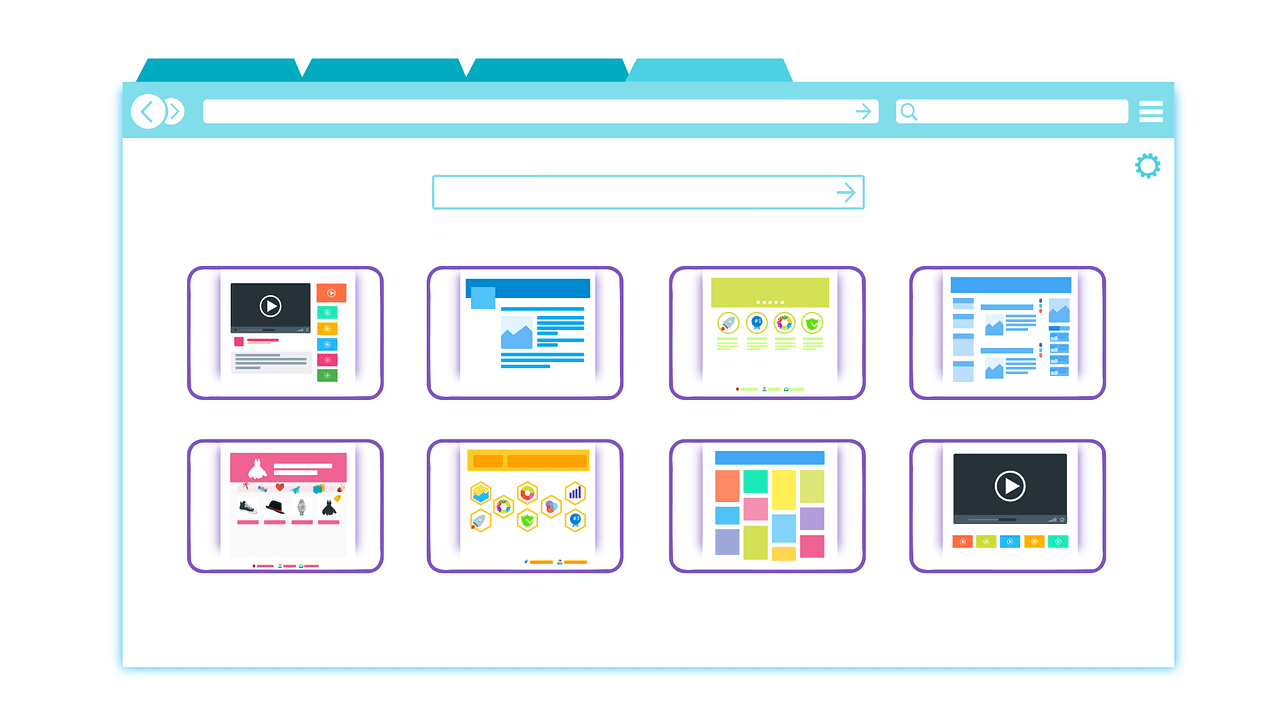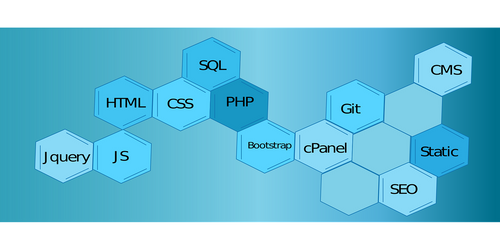Importance of Choosing the Right Programming Language for Web Development
The right choice of a programming language for web development affects the functionality, performance, availability of resources, and long-term prospects of a project. Careful consideration should be given to factors such as the language's capabilities, its ecosystem, and community support to ensure a successful software development process.
The programming language determines the overall functionality and performance of a website or web application. Different languages excel in different areas, such as speed, scalability, security, and ease of use. Selecting the appropriate language ensures that the development process is efficient, and the end product meets the desired requirements.
Additionally, the choice of programming language affects the availability of libraries, frameworks, and tools that can be utilized during the development process. Each language has its own ecosystem with a variety of resources that can simplify and accelerate development tasks. For example, if you choose a popular language like JavaScript, you gain access to a vast array of frameworks like React, Angular, or Vue.js, which can enhance the functionality and user experience of your web application.
Finally, selecting the right programming language for web development can have long-term implications for the project. Consider factors such as the language community support, documentation, and future prospects. A language with an active and thriving community ensures that you can seek assistance and find resources when facing challenges during development. Furthermore, choosing a language with a promising future and widespread adoption increases the likelihood of finding skilled developers and allows for scalability and maintenance of the project over time.
Together, let's create a digital future that's robust, efficient, and built to last!
JavaScript As a Programming Language
JavaScript is a high-level, interpreted programming language that is primarily used for web development. It was originally designed as a scripting language for adding interactivity to web pages, but it has evolved into a versatile language that can be used on both the client-side and server-side of web applications. It offers a wide range of features that make it a popular choice among developers.
Key Features and Strengths
JavaScript, as a programming language, possesses several features that contribute to its popularity and widespread use. Here are some of its prominent characteristics:
Versatility
JavaScript is a highly flexible language that can be used for both front-end and back-end web development. It allows developers to create dynamic and interactive user interfaces on the client-side, as well as perform server-side operations with the help of platforms like Node.js.
Browser Compatibility
It is supported by all major web browsers, including Chrome, Firefox, Safari, and Edge. This cross-browser compatibility ensures that JavaScript code runs consistently across different platforms, making it an ideal choice for web development.
Interactivity
With JavaScript, developers can create dynamic elements such as form validations, image sliders, pop-up windows, and real-time updates without the need to reload the entire page.
Document Object Model (DOM) Manipulation
This allows developers to dynamically modify the structure, content, and styling of HTML elements, enabling dynamic web experiences and responsive designs.
Asynchronous Programming
JavaScript supports asynchronous programming, which allows for non-blocking operations. This is particularly useful for handling tasks that involve network requests, such as fetching data from servers or making API calls. Asynchronous programming is achieved through techniques like callbacks, promises, and async/await, improving the efficiency and responsiveness of web applications.
Rich Ecosystem
JavaScript has a vast and thriving set of libraries, frameworks, and tools. These resources, such as jQuery, React, Angular, and Express.js, provide developers with pre-built functionalities, ready-made components, and efficient development workflows.
Easy Integration
It seamlessly integrates with other web technologies like HTML and CSS. It can be embedded directly into HTML documents or included as external script files, allowing developers to leverage existing web content and styles while adding interactivity and behavior.
Common Use Cases in Web Development
JavaScript is used in various aspects of web development. Here are some common use cases where it plays a vital role:
Front-End Development
It is used to create dynamic and interactive user interfaces. It enables developers to add interactivity, handle user events, and manipulate the DOM to create responsive web pages.
Form Validation and Data Handling
It helps developers to validate user input in real-time, ensuring that data submitted through forms meets specific criteria or constraints. JavaScript also facilitates handling and manipulation of data entered by users, such as performing calculations, formatting data, or making API calls to retrieve or store data on the server.
Dynamic Content and User Experience
JavaScript allows developers to create engaging web experiences. It enables the loading of new content or updating portions of a web page without refreshing the entire page, resulting in a smoother user experience. JavaScript is often used to implement features like infinite scrolling, image sliders, carousels, collapsible menus, and interactive maps, enhancing the overall interactivity and usability of web applications.
Browser Compatibility and Feature Detection
JavaScript is essential for handling browser compatibility issues. It allows developers to write code that detects specific browser features and adapts the application's behavior accordingly. JavaScript libraries like Modernizr assist in feature detection and help ensure consistent functionality across different browsers and versions.
Interaction with APIs
By making HTTP requests from JavaScript, developers can retrieve data from external sources, such as weather information, social media feeds, or data from a database. JavaScript's versatility and ability to handle JSON (JavaScript Object Notation) make it an ideal language for consuming and manipulating data from APIs.
TypeScript As a Superset of JavaS

TypeScript is a superset of JavaScript that builds on it and thanks to that offers better tools and features. Any valid JS code is also valid TypeScript code, which extends the syntax of JavaScript by adding optional static typing, along with other features that help with tooling, development, and maintainability.
Advantages and Benefits of Using TypeScript
TypeScript is an open-source programming language developed by Microsoft. Using it offers several advantages over plain JavaScript development:
-
Strong typing: enforces static typing, catching errors at compile-time and improving code reliability;
-
Enhanced tooling: provides excellent IDE support with features like autocompletion, code navigation, and refactoring capabilities;
-
Code maintainability: TypeScript's type annotations serve as documentation, making the code easier to understand and maintain;
-
Compatibility with JavaScript which allows easy integration with existing JavaScript codebases;
-
Early error detection: thanks to static type checking helps catch potential issues and bugs during development, reducing runtime errors;
-
Improved scalability: features like modules, classes, and interfaces enhance code organization and reusability for larger projects;
-
Gradual adoption: it can be gradually introduced into existing JavaScript projects, allowing a smooth transition;
-
Active community and ecosystem: large and active community offer support, learning resources, and a growing ecosystem of libraries and frameworks.
Strong Typing and Static Analysis
Thanks to a strong type system, TypeScript allows developers to explicitly define the types of variables, function parameters, and return values. This ensures that variables are used consistently and that type-related errors are caught early during the development process. With strong typing, you can define types such as numbers, strings, boolean, arrays, objects, and more complex custom types. TypeScript also supports union types, intersection types, type aliases, and generics, providing a rich set of tools for expressing various types and data structures. By specifying types, you can improve the clarity and self-documentation of your code, making it easier to understand and maintain. The type system also facilitates better tooling support and enables early detection of type errors, resulting in more reliable and robust code.
Moreover, TypeScript performs static analysis of your code, which means that it examines the code without executing it. This analysis is done at compile-time and helps identify potential issues and errors before the code is run. The feedback provided by the static analysis can be valuable during development, as it helps you catch mistakes early and prevents many common errors from manifesting at runtime. This leads to improved code quality, reduced debugging time, and increased confidence in the reliability of your codebase.
Enhanced Tooling and Productivity
The TypeScript compiler and tooling ecosystem are highly extensible. Developers can write custom plugins and build tools on top of TypeScript to enhance their development workflow. This flexibility allows developers to tailor the tooling to their specific needs and integrate TypeScript into their existing toolchains. Moreover, TypeScript significantly enhances productivity in software development with its strong typing, advanced tooling, and improved code readability. By catching errors at compile-time, it reduces debugging time and ensures code reliability, leading to faster development cycles. The IDE integration and features like autocompletion, code navigation, and refactoring support streamline coding tasks and reduce manual effort. TypeScript's clear type annotations serve as documentation, improving code comprehension and collaboration within teams.
Improved Code Organization and Maintainability
TypeScript's type annotations serve as documentation for the codebase. By explicitly defining types, developers can easily understand the intent and purpose of variables, functions, and interfaces. This improves code readability, making it easier to maintain and collaborate on projects, especially in large codebases.
The Difference Between TypeScript and JavaScript

TypeScript and JavaScript are both widely used programming languages, but they have significant differences in terms of their features, use cases, and development approaches. These differences have a significant impact on factors such as code maintainability, error detection, tooling support, and scalability. Understanding the distinctions between TypeScript and JavaScript is essential for developers to make informed decisions about which language is best suited for their specific projects and requirements.
Syntax and Language Features
TypeScript:
-
supports static typing with type annotations;
-
adds additional language features like classes, interfaces, enums, and modules;
-
offers enhanced IDE integration and tooling support;
-
allows for better code organization and reusability;
-
transpiles into plain JavaScript code for compatibility.
JavaScript:
-
is a dynamically typed language without static typing;
-
lacks certain language features like classes and interfaces (prior to the introduction of ES6 classes);
-
offers a wide range of libraries and frameworks;
-
can be run directly in web browsers or on the server-side using Node.js;
-
has a larger ecosystem and broader usage across different domains.
Type System and Static Typing
TypeScript introduces optional static typing to JavaScript. It allows developers to declare variable types, function signatures, and object structures, providing early detection of type-related errors during development. This helps improve code reliability and maintainability. JavaScript, on the other hand, is dynamically typed, meaning that variable types are determined at runtime. It allows for more flexibility but may result in potential type-related issues that can only be discovered during execution. TypeScript's static typing adds an extra layer of safety and enables better code documentation, making it particularly suitable for large-scale projects and teams working collaboratively.
Development Experience and Tooling Support
TypeScript introduces optional static typing to JavaScript. It allows developers to declare variable types, function signatures, and object structures, providing early detection of type-related errors during development. This helps improve code reliability and maintainability. JavaScript, on the other hand, is dynamically typed, meaning that variable types are determined at runtime. It allows for more flexibility but may result in potential type-related issues that can only be discovered during execution. TypeScript's static typing adds an extra layer of safety and enables better code documentation, making it particularly suitable for large-scale projects and teams working collaboratively.
Enhancing Business Productivity with TypeScript

By leveraging the power of TypeScript, businesses can accelerate development, reduce errors, and create more reliable and maintainable software systems, ultimately driving productivity and success. TypeScript can significantly boost business productivity by providing several key advantages.
Streamlining development workflows and reducing errors
Typescript has emerged as a powerful tool for streamlining development workflows and minimizing errors in modern software projects. By introducing a robust type system, Typescript enables developers to catch potential bugs during the compilation phase rather than at runtime, resulting in more stable and reliable code. The ability to define types for variables, function parameters, and return values provides enhanced code clarity and helps prevent common programming mistakes. Additionally, Typescript's tooling support, including autocompletion, code navigation, and refactoring capabilities, significantly improves developer productivity and accelerates the development process.
Leveraging TypeScript's rich ecosystem and libraries
Making use of TypeScript's tools empowers developers to build robust and scalable applications with ease. TypeScript benefits from a vast collection of existing JavaScript libraries that can be seamlessly integrated into projects, allowing developers to tap into a wide range of functionalities without sacrificing type safety. Additionally, TypeScript boasts its own ecosystem of libraries specifically designed to enhance TypeScript development, providing comprehensive solutions for tasks such as unit testing, form validation, API consumption, and more. This extensive ecosystem not only saves development time and effort but also ensures code quality and maintainability through the utilization of well-tested and widely adopted solutions.
Facilitating team collaboration
TypeScript plays a pivotal role in facilitating teamwork as well as scalability within software development projects. With its strong type system and static analysis capabilities, TypeScript provides teams with a shared language and a clear understanding of the codebase. This leads to improved communication and collaboration among team members, as it reduces ambiguity and fosters effective code reviews.
Ensuring Reliability in Web Development with TypeScript

When it comes to web development, TypeScript ensures reliability throughout the entire development process. By introducing static typing and a robust type system, TypeScript enables developers to catch potential errors and bugs during the compilation phase rather than at runtime.
Preventing Common Runtime Errors with Static Typing
With its static typing feature, Typescript proves to be a powerful tool in preventing common runtime errors that often plague software development. By introducing a strict type system, TypeScript allows developers to catch potential errors during the development phase itself, rather than encountering them at runtime. This approach provides several benefits, including improved code quality, enhanced readability, and better maintenance. With static typing, variables, function parameters, and return values are explicitly defined, reducing the chances of unintended data manipulation or incompatible operations.
Detecting Errors Early with Compile-Time Checks
By analyzing code before it is executed, TypeScript's compiler identifies potential errors and issues based on static typing and type inference. This proactive approach allows developers to catch and rectify mistakes during development, reducing the likelihood of encountering errors at runtime. Compile-time checks verify variable types, function signatures, and overall code structure, providing an additional layer of validation and ensuring code correctness. This early detection of errors not only saves time and effort but also promotes code quality and reliability.
Testing and Debugging Capabilities
TypeScript offers a range of testing and debugging capabilities that significantly enhance the development process. TypeScript's strong typing system enables developers to write comprehensive unit tests with greater confidence, as type errors and inconsistencies can be caught early during compilation. Additionally, TypeScript integrates seamlessly with popular testing frameworks, such as Jest or Mocha, providing rich features like mocking, assertions, and test runners. This allows developers to write thorough and reliable test suits to validate the behavior of their code. Moreover, TypeScript's tooling support, including advanced debugging tools and IDE integrations, makes it easier to identify and fix issues during development. The combination of TypeScript's static type checking and thorough testing and debugging capabilities empowers developers to build high-quality and bug-free software, reducing the risk of errors and ensuring the reliability of their applications.
Contact us and discover the power of TypeScript!



